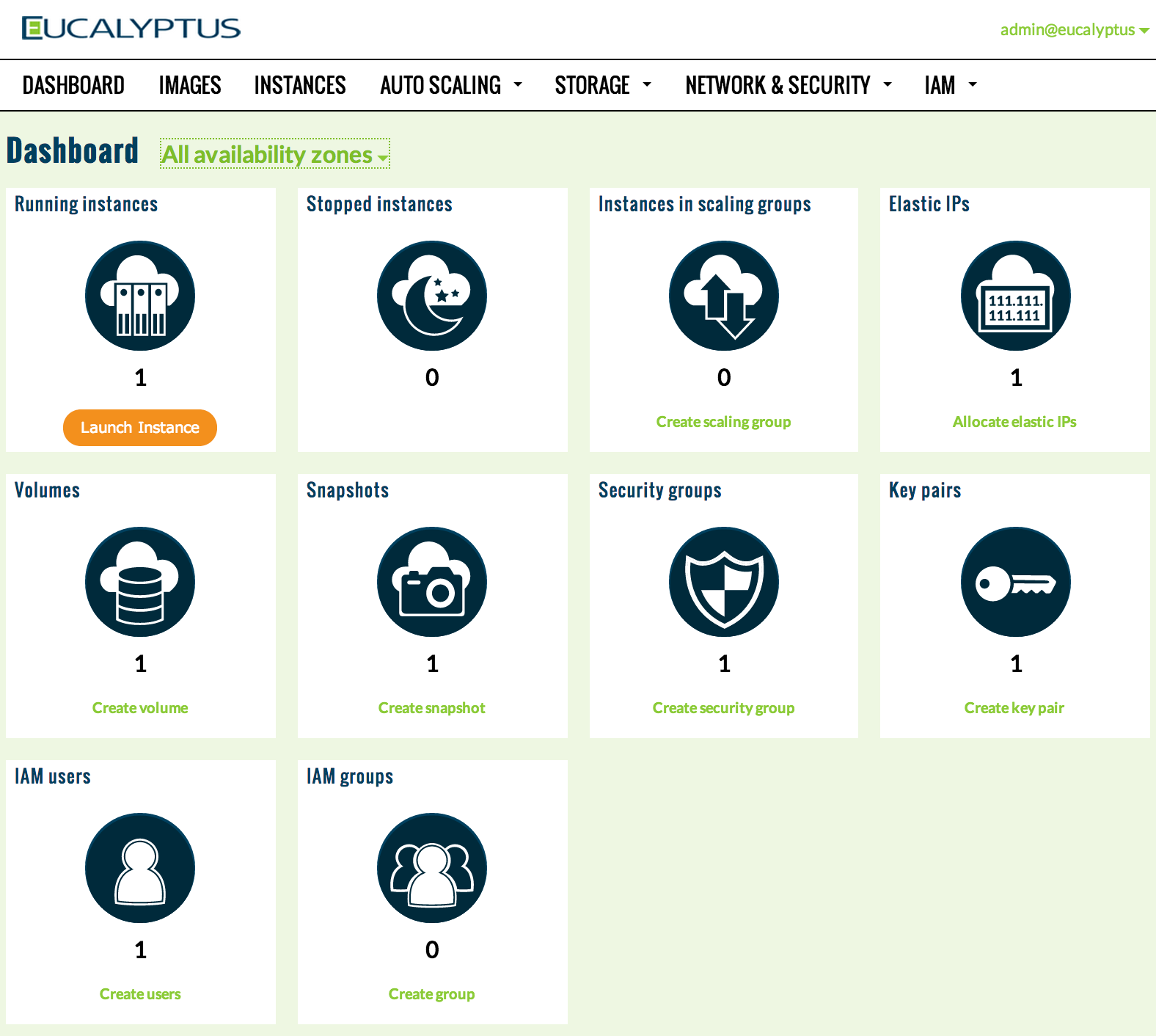Current use
We have used these machines to test both single node, and networking setups. Initially, a virtual machine is started using the eucaconsole web interface. It's as simple as choosing the system size, and operating system from a dropdown menu and pressing "start". When the machine has started, we are able to ssh into it and install and start services and programs as we need them.

OpenFlow
Current research is being performed on network switching which will make heavy use of the system's ability to start, stop, and connect multiple VMs. We are connecting all the controllers through a secondary network which is made up of OpenFlow enabled switches.
Our research involves transferring video from cameras mounted on vehicles to our servers. Initially, we will model our network structure using virtual machines, and this will allow us to test and iterate our networking code before actually mounting cameras on cars.
OpenCL video processing
In order to show encoding and processing code using OpenCL, this virtual cluster allowed us to start three machines of varying sizes, and run the code on all three. The results gave us an idea of how long it would take to run this code on physical machines, and guided our expectations when deploying the code.

1 and 2 were external VM solutions (GENI and ClouLab respectively), and 3, 4, and 5 were internal eucalyptus virtual machines of different sizes
Hadoop
When studying hadoop optimization, we started two machines: a hadoop controller and a hadoop node. After starting them up, we installed and configured hadoop on both machines, and ran our own code on them.